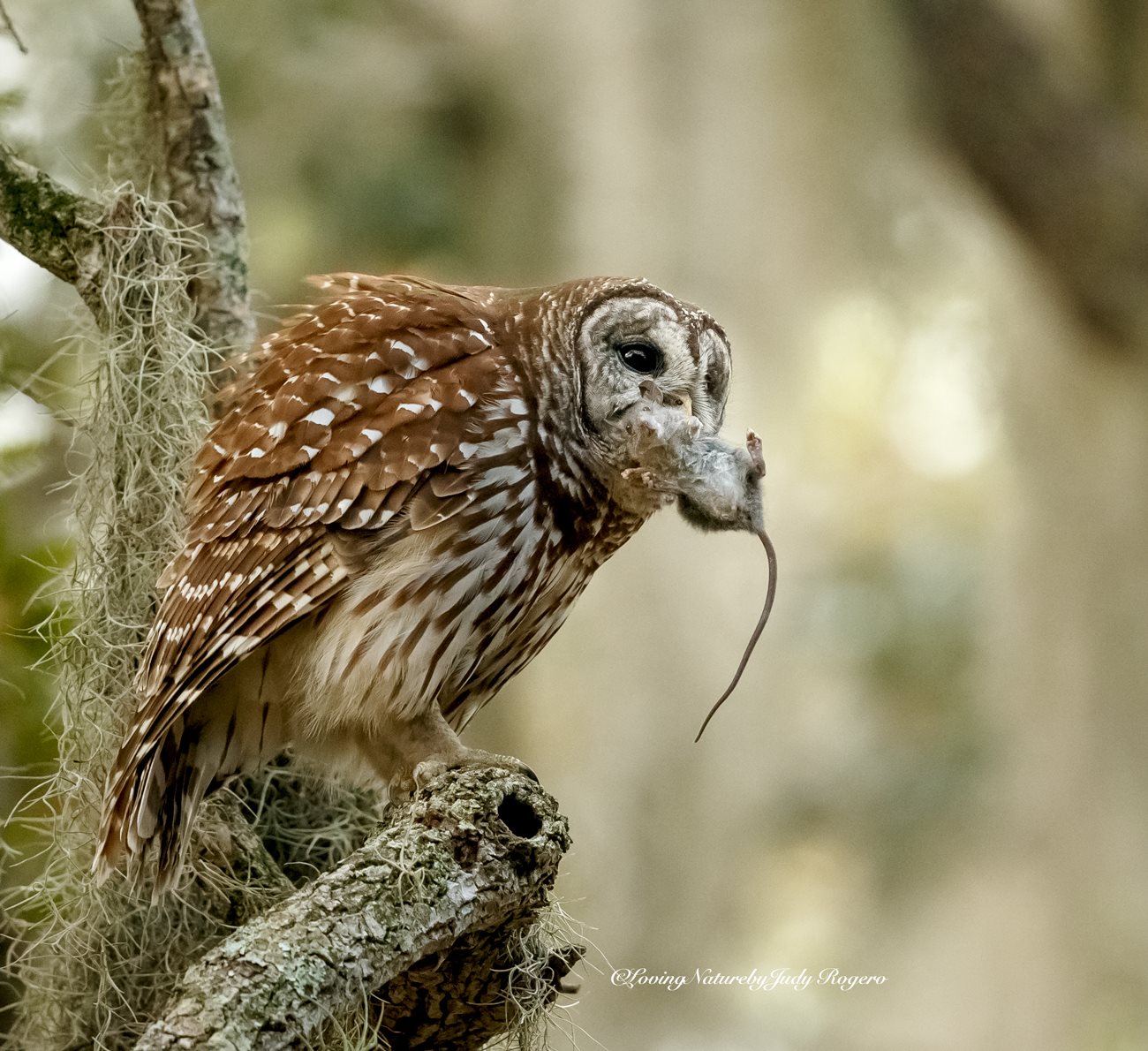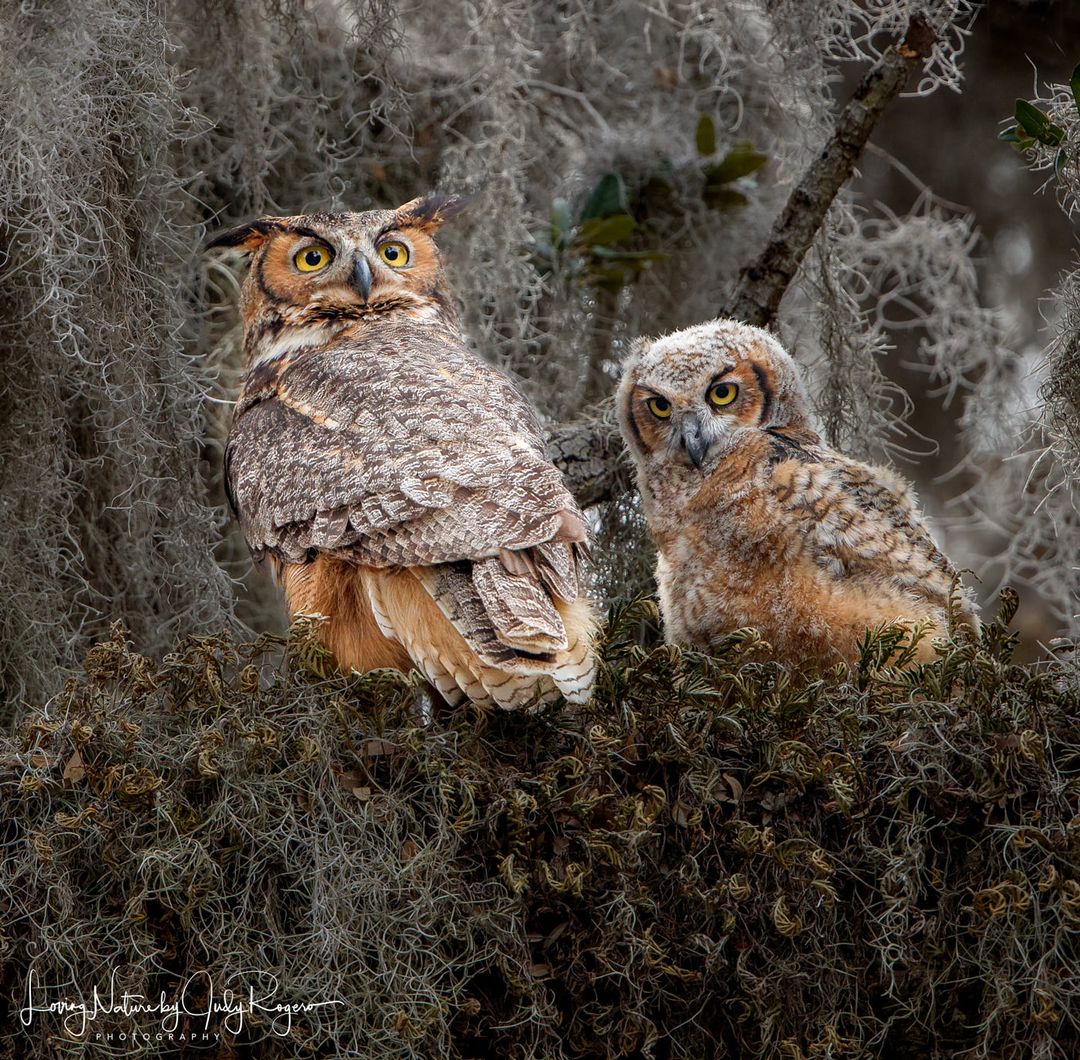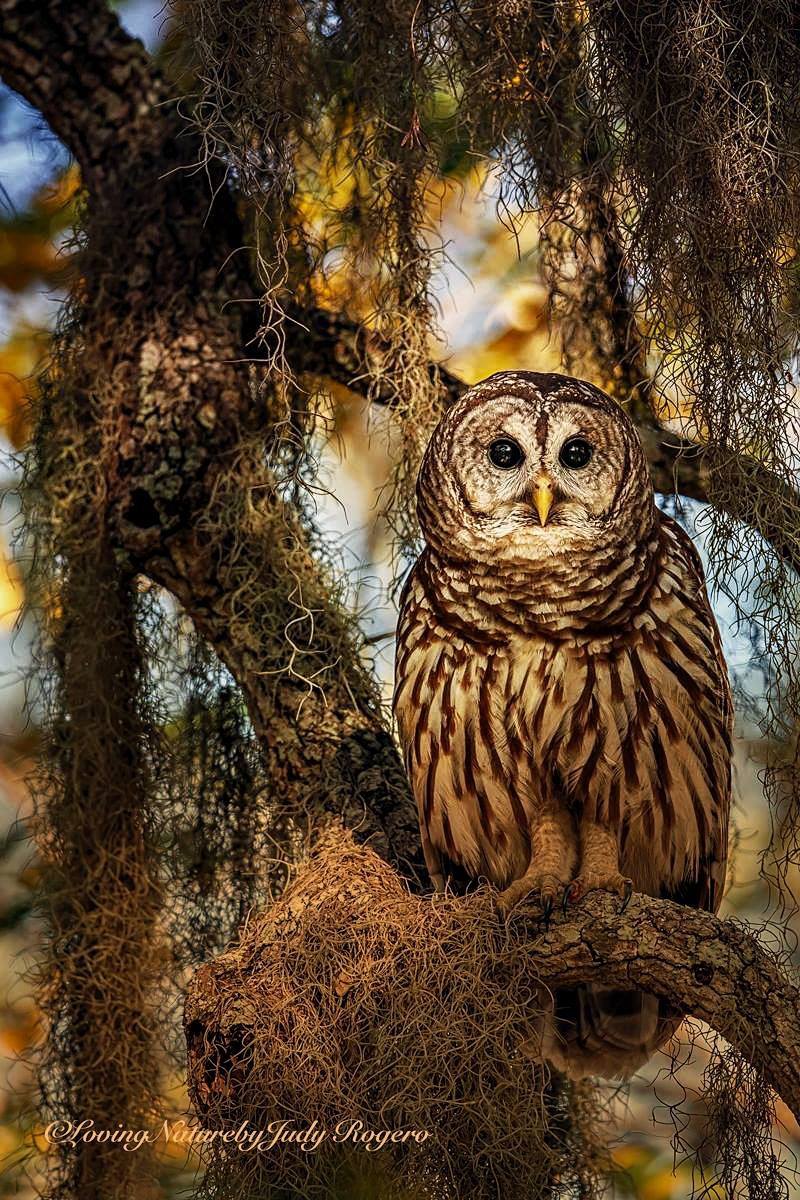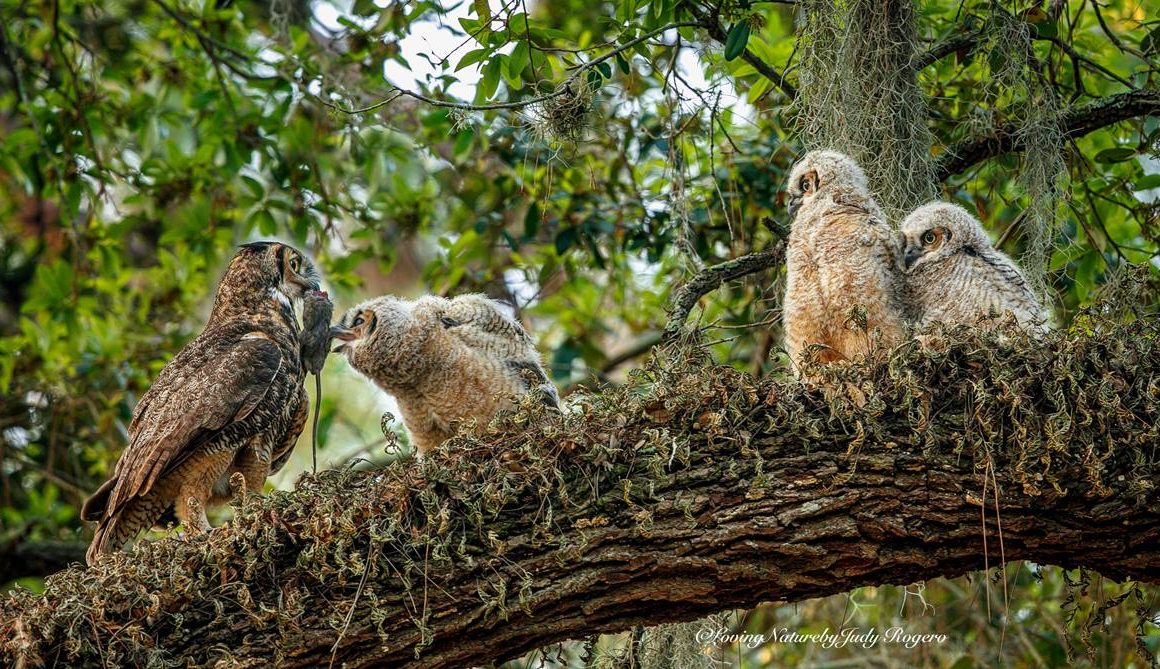
It all started when a great horned owlet named Huey was found dead after falling from a nest in Phillipe Park in Safety Harbor. His parents, Emily and Oliver, had successfully nested in what was known as the “Owl Tree” for at least seven years, attracting photographers from across the state. Then Emily died, and then Huey’s brother Louie and then Oliver, all within days of each other. Within a month, four more owls died 15 miles away in Dunedin’s Hammock Park. Necropsies revealed that the owls were all killed by rodenticide, accidentally ingested when they ate rats that had been intentionally poisoned.
They weren’t the only owls to die this spring. Nesting owls in a south Tampa park (pictured above) all died of rodenticide, a barred owl in Manatee County also died. “We saw the Manatee owl one morning at sunrise, but when we went back, she was dead,” said photographer Judy Rogero. “Most of the time, the owls are dying in parks near residential areas, they don’t seem to be having those problems in places like Myakka (River State Park).”
These recent deaths documented by photographers may be the most visible case of rodenticides killing wildlife, but it happens often, says Nancy Murrah, president of the Raptor Center of Tampa Bay. “We can’t necropsy every bird we suspect of dying of rodenticide because of the cost, but we know the symptoms well and we see many birds we suspect are dying from rat poison.”
The symptoms, including seizures, other neurological issues and loss of blood, can be treated if the bird is captured early enough, but only about 30% survive even with intensive treatment. And it’s likely that more birds may have enough poison in their system to create health issues without outright killing them, she said.

“A bald eagle that gets hit by a car, for instance, may die of blunt trauma but there’s got to be another reason why it couldn’t get across the road safely,” she said. “We find other raptors, like red-shouldered hawks, unconscious or dead even though they’re nowhere near a road or a place where they could have been injured. Those poisons also bioaccumulate over time so we think most raptors have been exposed to some level of rodenticide.”
Nationally, a researcher at Tufts Wildlife Clinic in Massachusetts found that 100% of the red-tailed hawk carcasses she examined had rodenticide in their systems, and that a bald eagle killed by rat poison had traces of three different rodenticides in its liver.
Pinellas County has banned the use of rodenticide in all parks, and local governments in Safety Harbor and Dunedin have replaced rodenticide bait with snap traps that kill rats immediately rather than leaving them alive where owls and other raptors can capture them.
Volunteers also are stepping up, creating an Owl Team on Facebook at Safety Harbor Strong Owls & Nature. “We and all the wildlife need all the help we can get,” said Fairl Thomas, one of the organizers. “That means if you see bait boxes while you’re out, please consider talking to the management and offering them one of our pamphlets for further information.”(Bait boxes are the shoebox-sized plastic containers with rat-sized holes on their sides often seen near dumpsters.)

Birds in Helping Hands, based in Seminole, also has created a certificate of recognition as part of the Owl Team’s efforts to encourage businesses to remove rodenticide from their properties
In Hillsborough, Murrah is recruiting volunteers to start a similar program. “Most people don’t realize just how dangerous these poisons are to raptors and the other predators that feed upon rats.”
Rather than using rat poison, she recommends that residents seal their homes so rats can’t enter, remove pet and bird food from their yards, and search for places rats can nest, including nearly anything that’s flat on the ground. “They can burrow up to 16 inches so even something like an empty bucket is a place for them to hide.”
Businesses, especially restaurants, can keep dumpsters closed to prevent them from attracting rodents and use snap traps in bait boxes rather than rodenticides. “Bait traps, by design, actually attract rats.”
If rats are found inside a home, use a snap trap to humanely kill them. “A rat that eats poison inside your home is likely to go outside searching for water before it dies,” Murrah said.
But killing every rat should not be the goal. “Rats are food for wildlife including birds, foxes, skunks and bobcats. If we completely eliminate them, we eliminate a lot of the wildlife that depends upon them.”
We’ve gotten so many comments on this article that we’re updating it with a blog from Pinellas County Extension that describes alternate treatment options in more detail, and explains the differences in rodenticides. https://blogs.ifas.ufl.edu/pinellasco/2022/07/25/management-of-rodents/
